| Vafa Mortar | |
|---|---|
 | |
| Place of origin | |
The Vafa Mortar is a 160 mm mortar manufactured in Iran.
| Vafa Mortar | |
|---|---|
 | |
| Place of origin | |
The Vafa Mortar is a 160 mm mortar manufactured in Iran.
The Vafa Mortar was unveiled during a National Defense Industry Day ceremony in Tehran, Iran on August 21, 2012. [1]
The Iranian government claims the mortar has a range of 20 kilometres (12 mi). [2] It is a 160 mm mortar. [2] Iranian Defense Minister Ahmad Vahidi claimed the mortar is capable of firing five to eight projectiles per minute. [1]
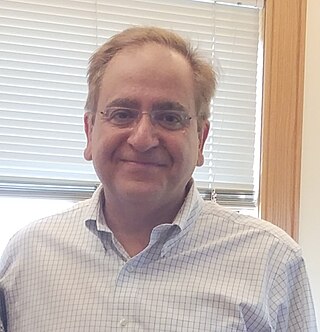
Cumrun Vafa is an Iranian-American theoretical physicist and the Hollis Professor of Mathematics and Natural Philosophy at Harvard University.

Iran–Israel relations can be divided into four major phases: the ambivalent period from 1947 to 1953, the friendly period during the era of the Pahlavi dynasty from 1953 to 1979, the worsening period following the Iranian Revolution from 1979 to 1990, and the ongoing period of open hostility since the end of the Gulf War in 1991. In 1947, Iran was among 13 countries that voted against the United Nations Partition Plan for the British Mandate of Palestine. Two years later, Iran also voted against Israel's admission to the United Nations.
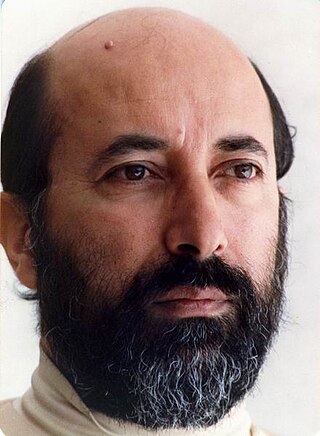
Mostafa Chamran Save'ei was an Iranian physicist, politician, commander and guerrilla fighter who served as the first defense minister of post-revolutionary Iran and a member of parliament as well as the commander of paramilitary volunteers in Iran–Iraq War, known as "Irregular Warfare Headquarters". He was killed during the Iran–Iraq War. In Iran, he is known as a martyr and a symbol of an ideological and revolutionary Muslim who left academic careers and prestigious positions as a scientist and professor in the US, University of California, Berkeley and migrated in order to help the Islamic movements in Palestine, Lebanon, Egypt as a chief revolutionary guerilla, as well as in the Islamic revolution of Iran. He helped to found the Amal Movement in southern Lebanon.

The Islamic Republic of Iran Railways is the national state-owned railway system of Iran. The Raja Passenger Train Company is an associate of the IR, and manages its passenger trains. The Railway Transportation Company is an associate of the IR, which manages its freight transport. The Ministry of Roads & Urban Development is the state agency that oversees the IRIR. Some 33 million tonnes of goods and 29 million passengers are transported annually by the rail transportation network, accounting for 9 percent and 11 percent of all transportation in Iran, respectively (2011).

The Islamic Republic of Iran Air Defense Force is the anti-aircraft warfare service branch of Iran's regular military, the Islamic Republic of Iran Army (Artesh). It split from the air force (IRIAF) in 2008 and controls the country's military radar network.

Ahmad Vahidi is an Iranian military commander of the Revolutionary Guards and current Minister of Interior since August 25, 2021. In addition, he is currently member of the Expediency Discernment Council.
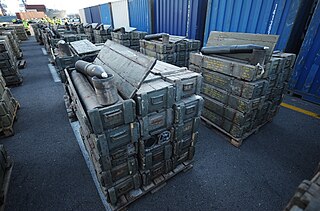
The Francop Affair was a high seas incident on November 4, 2009 in which the Israeli Navy seized the cargo ship MV Francop in the eastern Mediterranean Sea and its cargo of hundreds of tons of weapons allegedly bound from Iran to Hezbollah. The incident is also known by its military operation name, Operation Four Species.

Malek Ashtar University of Technology (MUT) is a public research university of engineering, science in Iran. Founded in 1984, MUT's main campus is located at Tehran, the capital of Iran. Its other campuses are located in Isfahan and Urmia. The university is named after Malik al-Ashtar, one of the most loyal companions of Ali Ibn Abi Talib.

The HESA Karrar is an Iranian jet-powered target drone manufactured by Iran Aircraft Manufacturing Industrial Company (HESA) since 2010. The Karrar is a derivative of the American 1970s-era Beechcraft MQM-107 Streaker target drone, probably incorporating elements from the South African Skua, with hardpoints added for munitions. The Karrar was developed during the Ahmadinejad presidency.

The HM 12 Fateh is an Iranian 60mm mortar manufactured by the Ammunition & Metallurgy Industries Group, part of Iran's Defense Industries Organization. It is an unlicensed copy of Israel's Soltam 60 mm mortar. It is generally operated by two people but in urgent cases it can be operated by one as well.

Abbas Babaei was an Iranian pilot and brigadier-general in the Islamic Republic of Iran Air Force (IRIAF), during the Iran-Iraq War.

The Iran–Israel proxy conflict, also known as the Iran–Israel proxy war or Iran–Israel Cold War, is an ongoing proxy war between Iran and Israel. The conflict involves threats and hostility by Iran's leaders against Israel, and their declared objective to dissolve the Jewish state. Iran has provided funding, weapons, and training to groups including Lebanese Hezbollah, and Palestinian Islamic Jihad (PIJ), which have vowed and carried out attacks on Israel, and which have been designated terrorist organisations by many countries. Because of the hostility, Israel is concerned by Iran's nuclear weapons program and missile program, and is seeking to downgrade Iran's allies and proxies, as well as preventing Iranian entrenchment in Syria, another sworn enemy of Israel.
The Ya-Ali is an air-launched cruise missile (ALCM) built by Iran. The missile was first unveiled on 11 May 2014 when Iranian leader Grand Ayatollah Ali Khamenei visited the Aerospace Force of the Army of the Guardians of the Islamic Revolution. According to Janes Defence, the missile has a jet engine inlet and possibly uses a version of the Toloue-4 turbojet Iran produces for its longer-range anti-ship missiles and it is reported to have a range of 700 km. On February 7, 2015, Iran's Deputy Defense Minister Mohammad Eslami announced that the missile could previously be launched from only Mirage type fighter planes but it can now be launched from every fighter plane that Iran owns. It is named after a Shi'i religious expression beseeching imam Ali. As an ALCM, the Ya-Ali is distinct from the ground launched cruise missiles (GLCMs) in the Houthi inventory. According to Jane's Defense Weekly, the Houthis may have used a Quds 1 GLCM in the Abha International Airport attack on 12 June 2019. This airport in southwestern Saudi Arabia is less than 200 km from the Yemeni border. The Iranian Ya-Ali has a much longer range due to being imparted with much more kinetic and potential energy when released from a fighter aircraft such as the Mirage type. The Houthis have no fighter aircraft in their inventory.
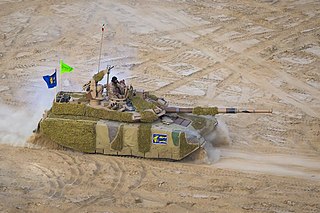
The Karrar is an Iranian main battle tank. The tank was announced in 2016. At the announcement, it was stated that it possessed an electro-optical fire control system, a laser rangefinder, ballistic computer and could fire at both stationary and mobile targets in day or night.

The HESA Kowsar is an Iranian fighter jet based on the American Northrop F-5. The aircraft is equipped with new fourth generation avionics in combination with an advanced fire control system.
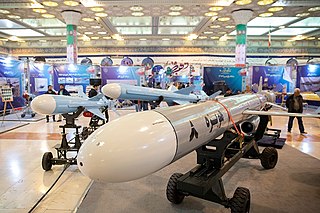
The Hoveyzeh is an Iranian designed and built, all-weather, surface-to-surface cruise missile. The Hoveyzeh is from the Soumar family of cruise missiles. The missile was unveiled at a defense exhibition in Tehran on 2 February 2019 during celebrations of the 40th anniversary of the 1979 Iranian Revolution. The Aerospace force of the Islamic Revolutionary Guard Corps will acquire and be supplied with these missiles.
The Taer 2 is an Iranian mid-range radar guided solid fueled surface-to-air missile designed to defend against aerial threats at altitudes of up to 25–27 km (75000 ft) and distances of up to 50 km away. It is meant for use as part of the Ra'ad air defense system, and was revealed during a military parade in Tehran on 21 September 2012. It shows similarities to the 9M317 missile just as the Raad air defense system does to the Buk missile system.